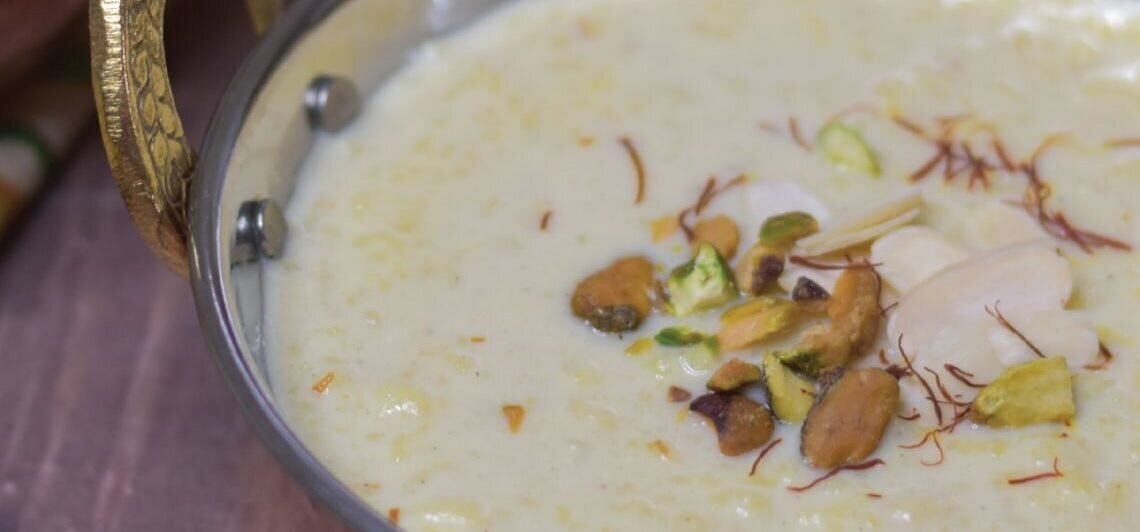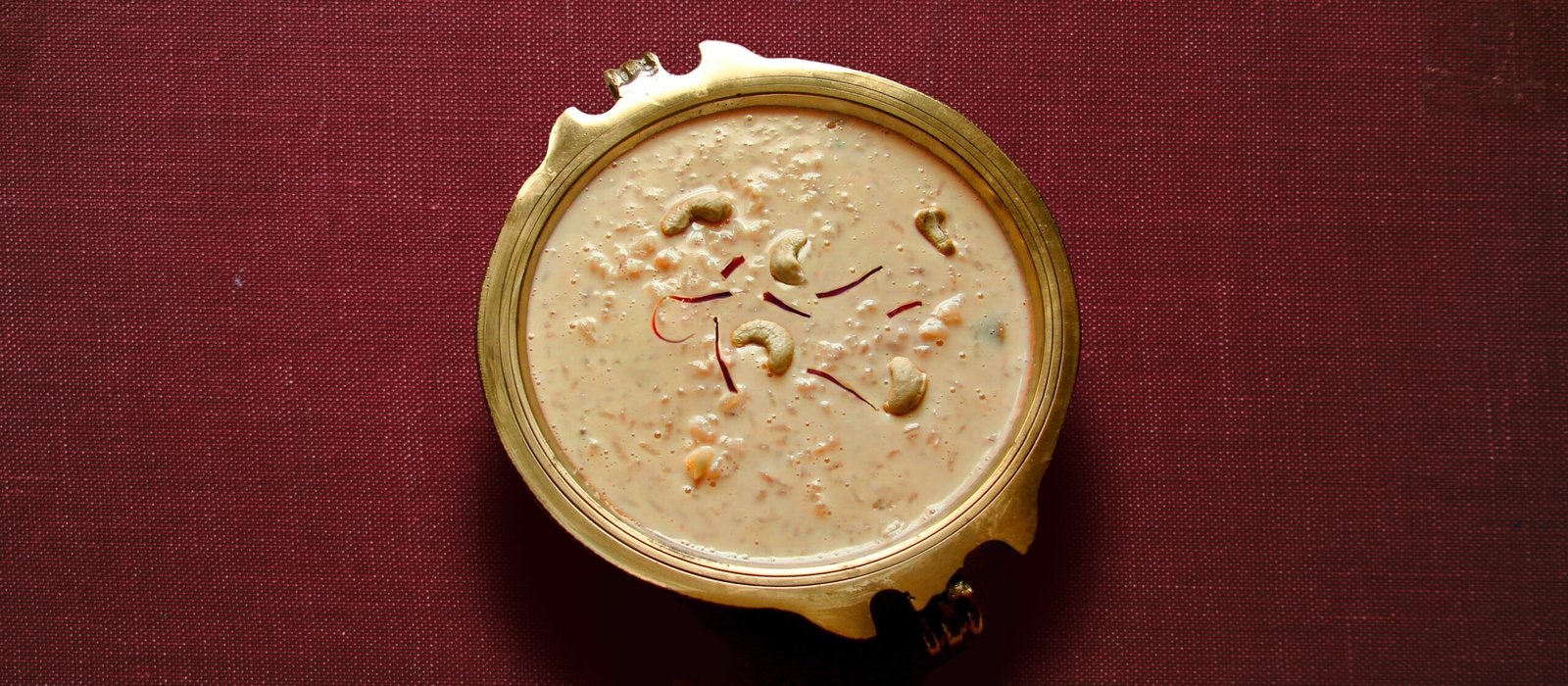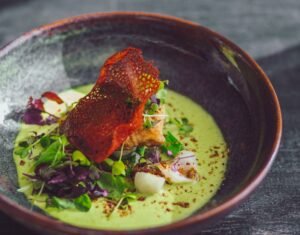Ayurvedic Ksheera or Kheer Rice Pudding: How to make a winning Recipe
Kheer and Kitchari are two ancient recipes from the Ayurveda culinary traditions, that have made their way into modern kitchens all over the world.
Kheer, Payasa, Payasam or Phirni is known by many names in South Asia. It is made from a base of milk, sugar, and rice and is finished with cow’s Ghee. In English, Kheer is called a rice pudding.
By mixing and matching the base of whole grain, which thickens and gives body, by using different sweeteners, and changing up the milk, which balances the blandness of the grain, new recipes are created.
Interesting twists are given by pounding and frying the whole grain in Ghee or toasting to develop a nutty flavor.
Different traditional recipes call for broken wheat, millet, tapioca pearls, vermicelli pasta, and fresh wheat pasta. Milk is adjusted based on the thickening from the grain.
The sweetener could be sugar, palm jaggery, sugarcane jaggery, sugar cane juice or any other local variety of traditional sweeteners.
It is typically flavored with desiccated coconut, raisins, saffron, cashews, pistachios, almonds, char magaz pumpkin seeds, cardamom, cumin, ginger, sesame, dates, etc.
On special occasions, silver varak or thin silver sheets is added to the Kheer.
No matter how you make it, Kheer is always a warm satisfying dessert for all seasons and reasons.
Recipe for My Kheer Rice Pudding

Ingredients
- 1/4 cup Basmati rice or any fragrant white rice
- 5 cups of milk
- 1/2 cup of sugar
- 1/2 tsp green cardamom powder
- A pinch of Saffron
- 1 tablespoon Ghee
For garnishing:
- 1 tablespoon almonds slivered
- 1 tablespoon chopped pistachios
- 1 tablespoon Ghee
- 1 tablespoon green raisins
How to make Kheer:
Rinse and soak the rice for 10-15 minutes. Drain on a paper towel and let it dry a little.
Warm the ghee in a heavy-bottomed saucepan and add the rice to it. Stir till light pink.
Add the milk and bring to a boil, simmer on the lowest flame setting till the rice is well cooked and reduced to a porridge consistency.
Stir every 5-10 minutes to prevent sticking and burning (depending on your saucepan)
Add the sugar when the Kheer starts to come together. Add the cardamom and saffron and mix well.
Heat the ghee and toast the nuts and raisins, cook on a low flame to prevent the raisins from burning.
Serve hot or chilled garnished with the toasted nuts.
Feel free to play around with the quantities, flavors and toppings, the sky is the limit. Enjoy!

Kheer Rice Pudding for Vata Body Types
Vata Body Types will be able to digest a kheer on their good digestion days. Jaggery kheers are better for Vatas, who will benefit from the warming effects of Jaggery.
A Phirni made of basmati rice, crisped in ghee and then crushed, will be easier for the Vata body than a whole raw Rice Kheer if digestion was low. Crushing, soaking, and frying in Ghee improves the digestion of the grain. Vatas will also do well with Mung bean kheers.
Kheer Rice Pudding for Pitta Body Types
Kheer is an ideal Pitta body Type dessert, with its simplicity and the cooling effect of cardamom and milk, this dish comes close to a Pitta’s idea of heaven.
Pittas don’t have to avoid the darker jaggery based kheers made with Shunthi dry ginger and cumin, but on an off digestion day, they can certainly enjoy the healing digestive benefits of cumin and dry ginger.
Kheer Rice pudding for Kapha Body Types
Kapha body types are best served by reducing the quantity and having the kheer as a first course so it helps to minimize their appetite and prevents them from overeating.
Kheer made with Jaggery will be warming for the Kapha body. Kheer flavored with saffron, cumin, bay leaf, shunthi dry ginger, etc will be warming for the cool Kaphas.
How to Serve Kheer Rice Pudding
Kheer is served at the end of a feast to help with digestion and to increase satisfaction. Kheer is an excellent source of micronutrients and energy. It finishes and completes a meal. With nearly 200 calories per serving, kheer is for special occasions.
When made thin like a slurry it is served as a nourishing post-feast drink on the side in a glass or made thick to be served in a bowl as a pudding, sometimes garnished with edible rose petals at weddings.
Cultural Significance of Kheer Rice Pudding
No South Asian wedding is complete without serving Kheer, from Kashmir to Kerala, from Thailand to Afghanistan there is some form of Kheer that is celebrated. The base remains whole grain, milk, and sugar, a pleasant end to a spicy lip smacking meal.
During the Winter full moon of Sharad Poornima, men and women in India, break their day long fast with a milk kheer. They eat a bowl of kheer after spending time in the moonlight. This is significant as during Hemanta, early winter, Pitta fire energy is very high and Kheer with milk and rice has a calming balancing effect on Pitta imbalance.
Kheer made at the Padmanabha Swamy Temple in the South of India is famous for its delicious taste and unique color. Large vats of copper or brass alloys (urali) are used to slow cook milk and freshly harvested red rice till it turns a pink caramel color, this is auspicious prasadam offering for the God and Goddesses.
Kheer is an important Ojas or vitality building, strength restoring snack for men. The Samhitas of Ayurveda advise men to eat kheer after making love to replenish their lost vigor. Women must have a black gram lentil snack like this South Indian Khichdi.
For Eid, fresh wheat pasta is made for a very special kheer recipe in India, especially the South. It is flavored with rose water and screw pine or kewra.
In Conclusion
Kheer or Ksheera is humanity’s oldest treat and it still never fails to please. If you are diabetic, then prepare with Samba Mapillai red rice and sweeten with cinnamon and cardamom. If you do not want to eat rice, use millets or broken sorghum to make kheer. It is just as tasty.
For those who have milk sensitivity, any plant-based fresh milk will make an excellent substitute. However, it will not have the same cooling benefits to the Pitta body types as a milk-based Kheer.
Nuts such as almonds and cashews, walnuts, and pistachios increase heat in the body. So do seeds like melon and pumpkin, it is best to not eat more than a handful, and only after soaking overnight.
Heavy nut and seed milk are challenging for Vata and Kapha body types, who will benefit from sticking to the traditional milk based recipes.
Those who have no other alternative but seed and nut milk, and who suffer from indigestion as well, should add some raw cumin, dry shunthi ginger, and cardamom or bay leaves to their kheer recipe.
Health-conscious peeps who may have challenged digestion must avoid condensed milk in their kheer rice pudding recipe.
Don’t be shy, say hello to me! 

Hi, I am Salila..
I enjoy bringing these unique Ayurveda blogs to you. Reach out to me on my Instagram profile and let me know how I can do better.
Love to answer any questions you may have.





Hello, can I ask you – with the bay leaves which can be added to this pudding – do you mean the European Bay leave or Indian – Tej patta?
Are the benefits of this two herbs different or similar?
Thank you in advance
Alena
Dear Alena,
Both work! I use any one that is available.
🙂